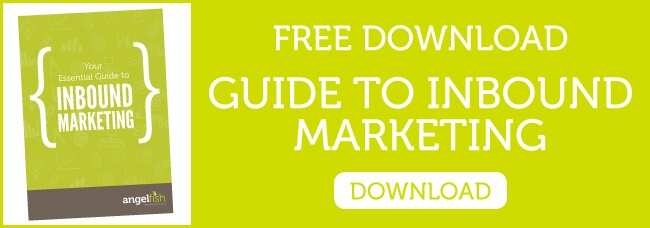A successful inbound marketing strategy relies on the regular production of educational, engaging, informative and share-worthy content.
But when it comes to producing effective content, you need to focus on what comes before the actual content writing.
The secret to creating engaging content for your B2B content marketing strategy starts long before you put pen to paper. To get the results you are looking for, you need to successfully map your content. Content mapping is the process of planning your content around your buyer personas, to solve their challenges and buyer problems.
Here are four stages to content mapping that will ensure you get more from your content writing.
1) Identify your personas
You might have come across the term 'personas' before. If you are new to inbound marketing, you should spend some time finding out what they are and why they are important.
We've covered these in detail here, and here you will find a useful guide demonstrating how to identify personas for your business.
In brief, your personas are fictional representations of the prospects you are targeting. They go beyond basic descriptions of age, gender, etc, going deeper to describe their wants, needs, pain points, challenges and more.
Your aim should be to focus your B2B content marketing strategy around your buyer personas so you can create content that is relevant enough to engage them.
Once you have defined your buyer personas, you will know their pain points and their needs, and you can use these to create content that provides the solutions.
Here's a guide to creating detailed buyer personas to get you started.

2) Carry out a content assessment
Do you have tonnes of content that you may have forgotten about? Conducting a content assessment will enable you to understand what content assets you currently have in your armory. Whilst you’re conducting this assessment, really drill down to the types of content that you currently have available. For example, tech businesses may have more video content than blog posts. Do you have a spectrum of content available for your audience? Does this include blogs, podcasts and videos?
After this, make a note of the views, likes and shares of these individual types of content. This will give you a very specific and detailed insight into what content you have available, what types of content these are and how popular they are with your audience. This information will indicate exactly what has and what hasn’t worked in the past, meaning you will be able to build out a detailed content programme that works to engage your prospects.
3) Search for relevant keywords
Keyword research for inbound marketing is another essential focus when it comes to effective content writing. Quite simply, if you don't target the right keywords, fewer of your target customers will discover your content in search. And those that do discover you, might not be the right people.
Do you have a keyword strategy in place? If so, how detailed is it? Did you use dedicated tools to find the keywords or did you base it on your knowledge and experience of your industry?
One strategy to focus on is using keywords to create pillar content and cluster content. This involves creating one authoritative piece of content (the pillar - this could be e-books or downloadable content) that will always be relevant to your audience and various smaller but related pieces of content (cluster content - this could be blog posts) that links back to the authority guide.

By grouping keywords into topics, you can write content around these topics and make use of all of the keywords to create authority content that has more chance of ranking.
We cover the importance of a keyword strategy in this blog post, so take a read to find out more.
Finally, before you create your content, you need to determine who you are targeting. But this time, we're not looking at the buyer personas but where they are in the journey.
Are they researching the general topic? Or are they ready to buy? Do they even know they have a problem? People first need to know that they need something and why they need it before you start selling to them.
Think about these three stages when you are considering the journey:
- Awareness
- Consideration
- Decision
Once you know which group they fit into, you can target them with content that speaks to them.
In the Awareness stage, someone has simply become aware that they have a problem that they need to solve. These people are at the very early stages of their research, and you don’t want to focus on your products in your content, with your aim being to provide information on the general problem so that they continue to search for solutions.
When they reach the Consideration stage, they have established what their problem is and are now looking for a solution. You can introduce your product to them and show them how it solves their problem. You can use content like case studies to show them how effective your solution is, but avoid targeting them with sales content.
Finally, when they are in the Decision stage, they are ready to buy. You can go all out with your sales content, which could include offering them free demos, consultations and quotes.
Start mapping your content
So, there you have four stages you should consider when it comes to effective content writing and your B2B content marketing strategy. Go over them in detail and use them to map your content so your content has the best chance of success when you publish it.
We've created a detailed guide to inbound marketing which can help you with your marketing journey - including your content marketing - download it now!




.png?width=500&name=A%20group%20of%20people%20talking%2c%20taking%20part%20in%20market%20research.%20(3).png)





